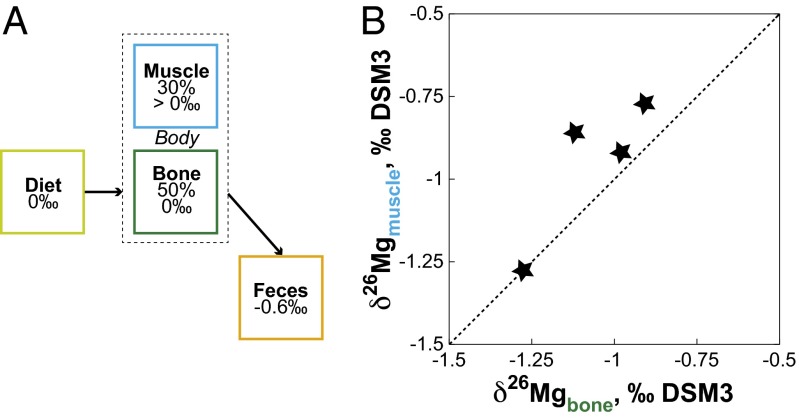Fig. 3.
(A) Schematic box model of Mg isotopes in the body. For a given diet δ26Mg value, enamel is fractionated by +0.3‰, but the bone δ26Mg value remains unchanged because the fractionation between enamel and bone equals approximately –0.3‰ (15). The feces δ26Mg value is fractionated by –0.6‰ relative to diet, leaving the body isotopically unbalanced. Muscle (30% of body Mg) is a likely candidate to be the complementary 26Mg-enriched reservoir. (B) According to the box model, the δ26Mg value of muscle must be higher than that of bone. Measurements of δ26Mg in muscle and bone in four sheep confirm this hypothesis.

